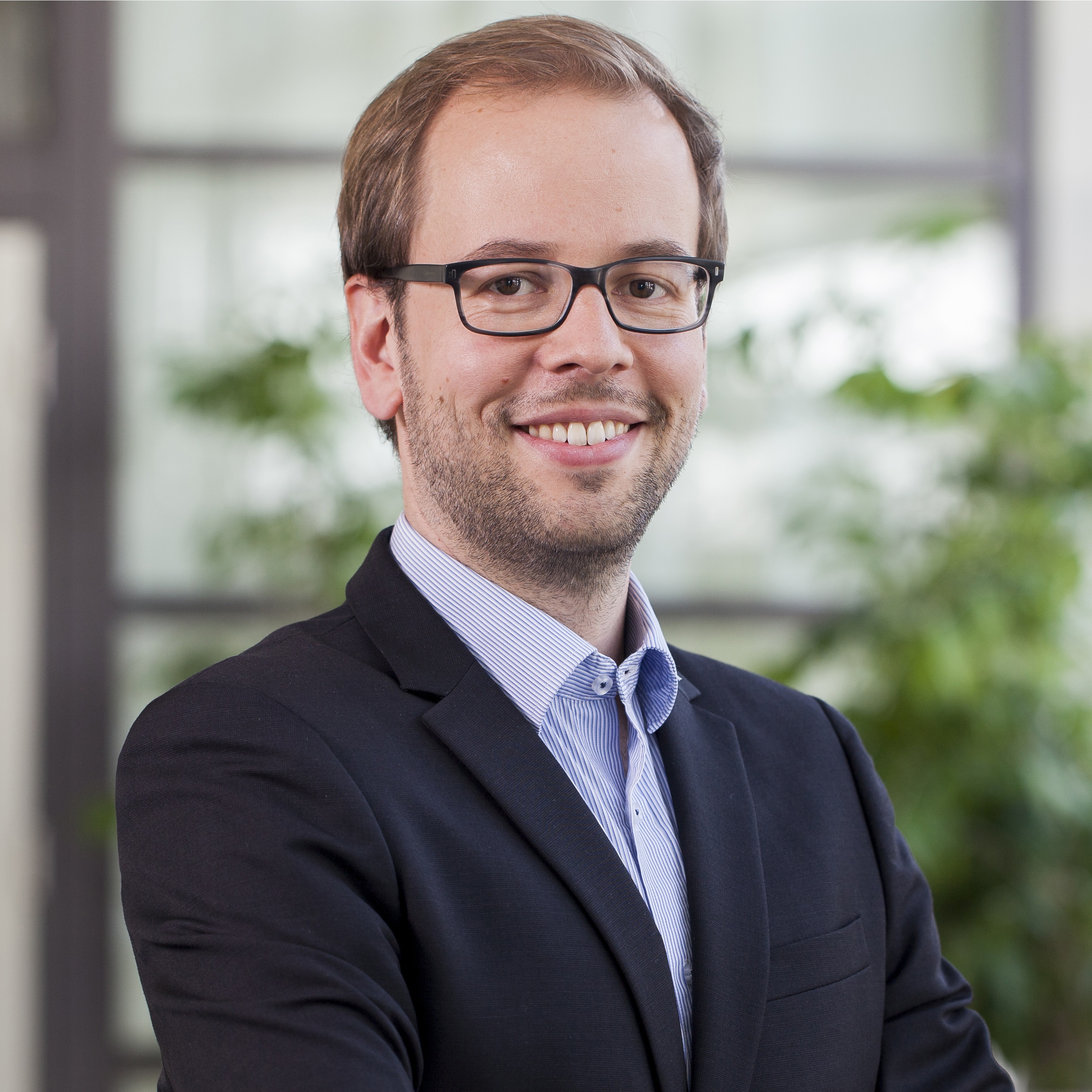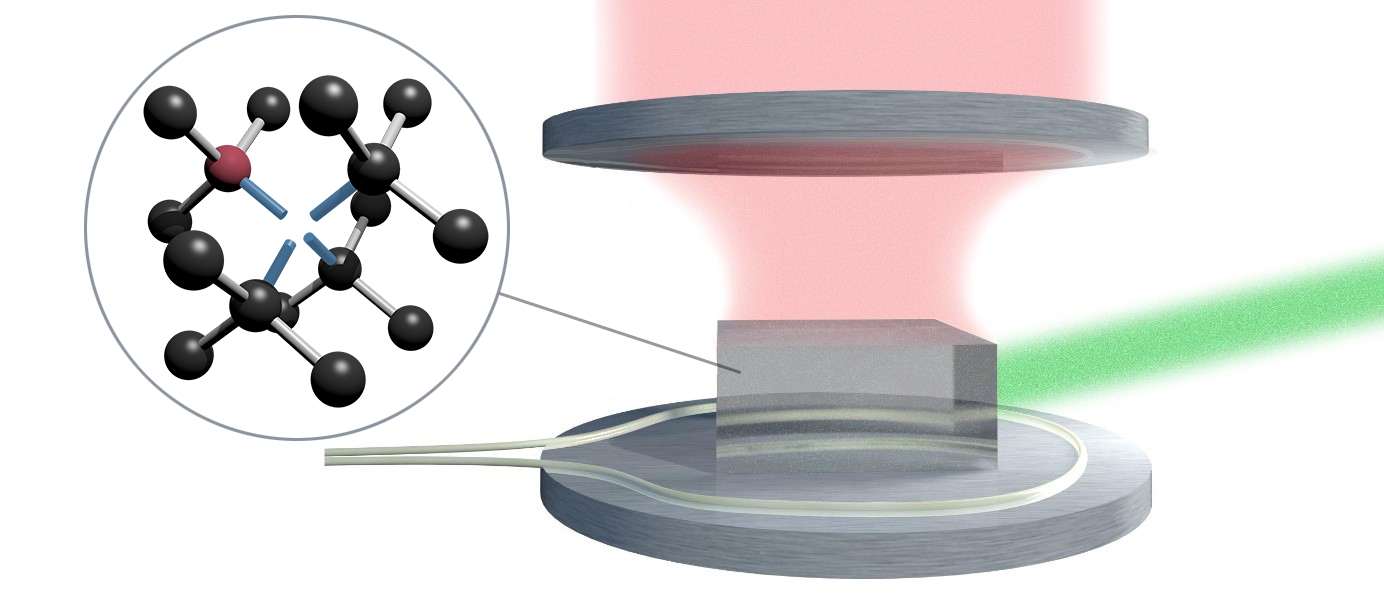“An ultraprecise sensor operating at room and body temperature”
Laser threshold magnetometry is about to set new standards in medical diagnostics. Fraunhofer Microelectronics spoke to Dr. Jan Jeske from Fraunhofer IAF about the possibilities offered by this technology.


Dr. Jeske, you are the DiLaMag project manager. What is the project’s goal?
We want to make laser threshold magnetometry (LTM) a reality, i.e. build the first laser using nitrogen-vacancy (NV) centers in diamond and make use of the intrinsic amplification offered by a laser system for more precise magnetic field sensors. To this end, we must first understand and improve the properties of the NV diamond for this application, e.g. absorption, homogeneity, and birefringence. In the second part of the project, we then hope to be able to demonstrate initial applications and to continue to improve sensitivity.
What are the advantages of NV-doped diamonds when compared to other laser media?
The point is that the laser medium can be used as a sensor itself. The laser output will ultimately be a direct indicator of the strength of the magnetic field. This is possible because the absorption and fluorescence of the NV centers depend on the state of the associated electron spin and that the spin, in turn, can be controlled by means of magnetic resonance. To this end, weak resonant microwaves of a certain resonance frequency are applied to the laser medium. The exterior magnetic field determines this resonance frequency. This mechanism is already being used by research on NV centers to measure magnetic fields. It is new, however, that the mechanism is being used as a laser medium and that the measuring signal is thus a laser output rather than a fluorescence signal. The laser threshold itself and thus the laser intensity above the threshold are affected by an exterior magnetic field. The laser will become a very sensitive magnetic field sensor.
What options are offered by the LTM technology?
The most significant advance of the LTM concept is improving the sensitivity. At the laser threshold and slightly above it, the intensity of the laser light changes very significantly. You can take advantage of this as an intrinsic amplification of only a small change of the fluorescence. Competition between spontaneous and stimulated emission of the laser, the improved contrast, the higher photon yield, and stronger signals thanks to large NV ensembles all contribute to higher precision in magnetic field measurements than if you were only measuring the fluorescence. This could mean that NV sensors could reach the sensitivity range of the most precise magnetic field sensors – such as those used in medical engineering, e.g. for brainwave measurements via MEG. This allows, for example, wide clinical use to achieve a better understanding of – and better treatment options for – epilepsy, Alzheimer’s, or Parkinson’s. Other capabilities offered by the LTM concept are practical ones: enabling an ultraprecise sensor operating at room and body temperature, as well as a sensor based on a laser cavity that can be addressed and read out using fiber optics.
In what other future areas of application will NV-doped diamonds play a role?
NV centers in diamond are an extremely promising system and a material for the future: a controllable quantum system at room temperature. Beyond magnetic field sensors, this also allows measurement of electric fields, temperature, and pressure at the highest possible spatial resolution with the aim of attaining a high level of measurement precision. Research is also being done into NV centers as a technology for a possible future quantum computer, as a source of single photons, or for quantum communication and cryptography.
Dr. Jeske, thank you very much for talking to us.
Dr. Jeske was talking to Judith Siegel and Marco Krämer.
About Jan Jeske:
Dr. Jan Jeske is head of the junior research group “quantum magnetometry” at Fraunhofer IAF and project manager of DiLaMag. He previously developed the concept of laser threshold magnetometry and demonstrated the first direct measurement of stimulated emission of NV centers during his four-year postdoc at RMIT University in Melbourne, Australia. He previously attained his PhD at the same university, investigating largely theoretical topics regarding decoherence in quantum systems. He obtained his degree in physics at the Karlsruhe Institute of Technology (KIT). After a total of seven years in Melbourne, he is not only bringing new ideas back to Germany, but he has also made some additions to his private life: His move to Freiburg sees him return to Germany with dual German-Australian citizenship and his Australian wife. Both of them are looking forward to a new phase of their lives in Germany.
Last modified: